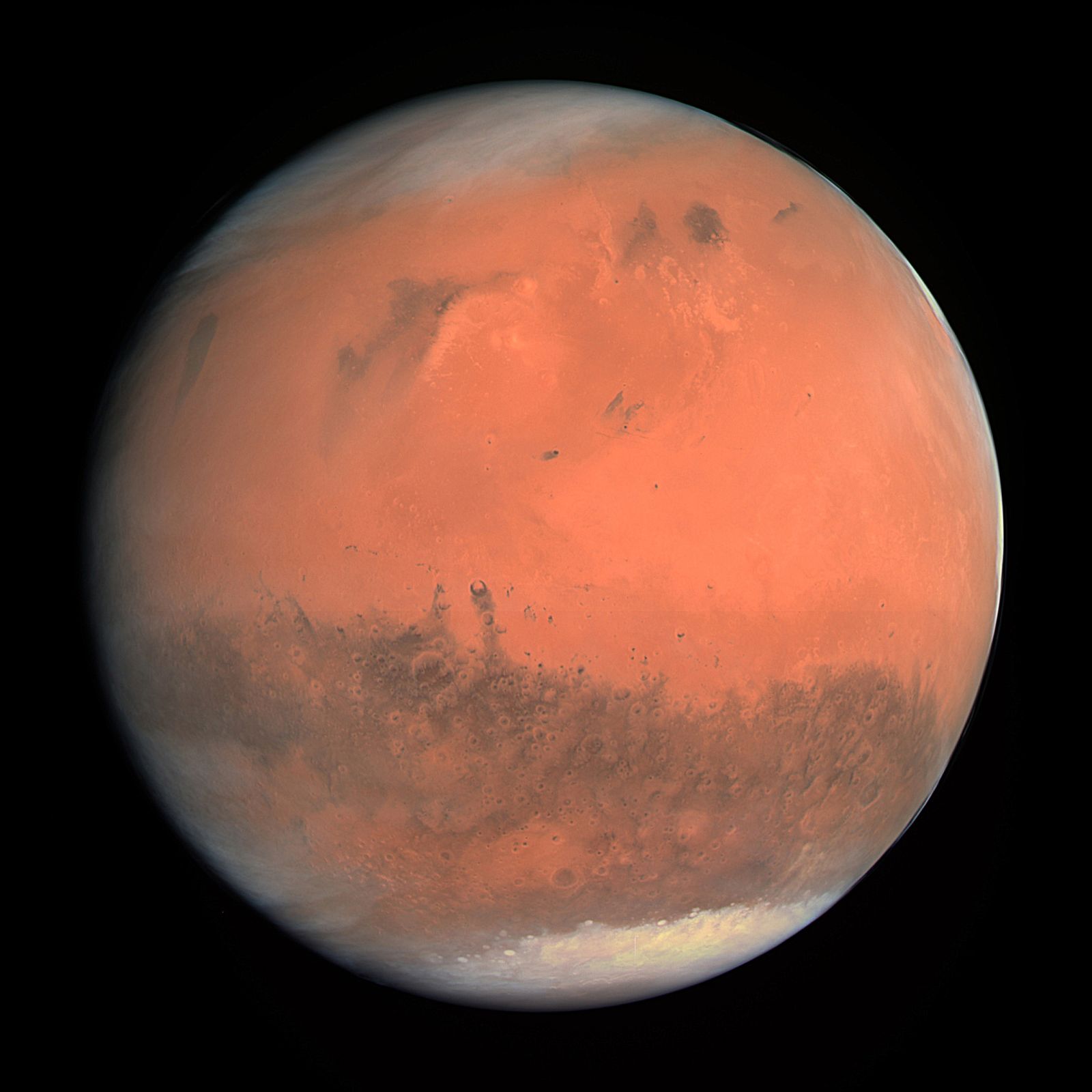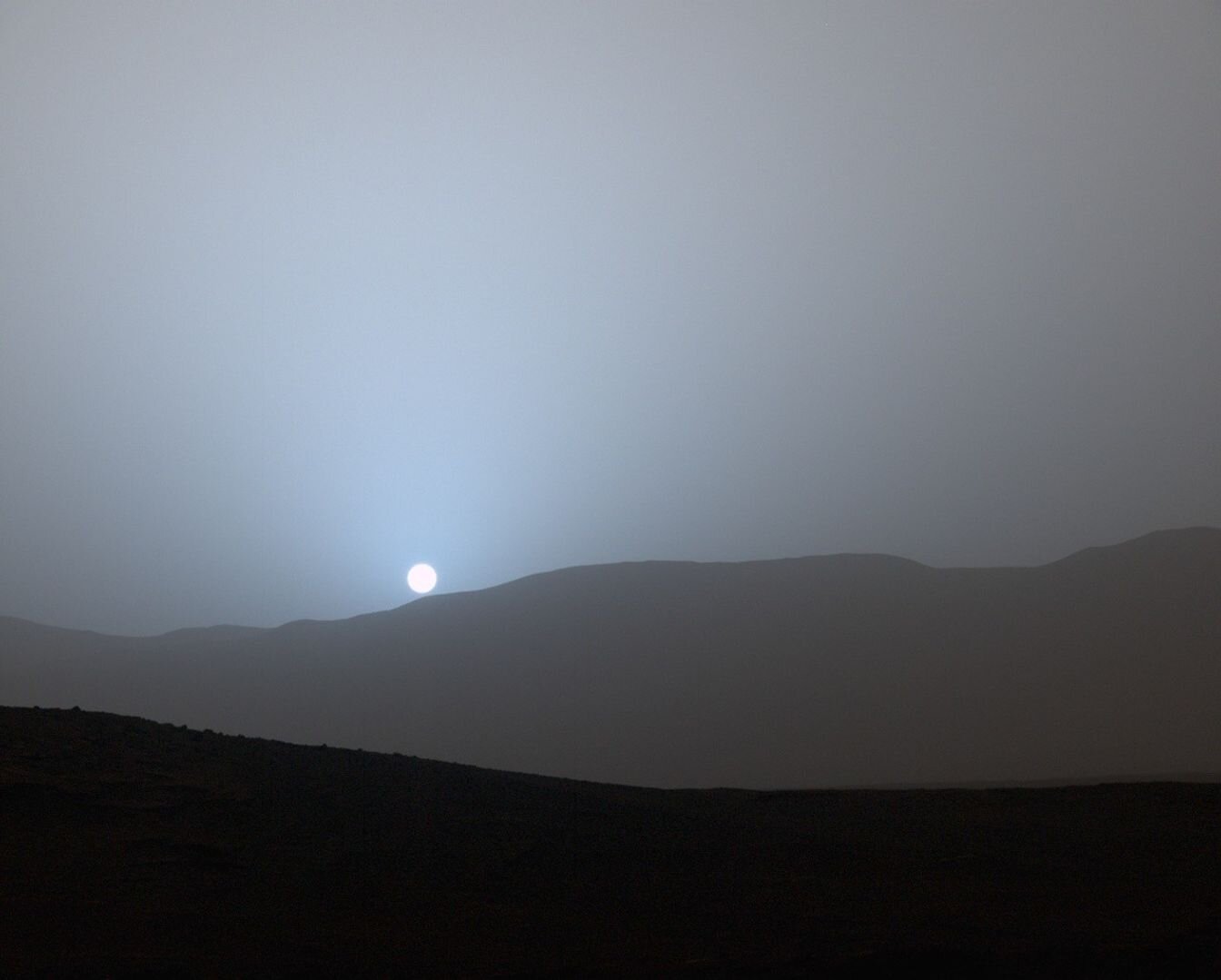Discovery: gravity waves impact Mars' climate 🟠
Follow us on Google News (click on ☆)
An international team, including scientists from the University of Tokyo, has shed light on the crucial role of atmospheric gravity waves on Mars. These waves significantly influence latitudinal air currents, especially at high altitudes. This discovery, published in the Journal of Geophysical Research Planets, is based on atmospheric data collected over a long period.

A true-color photo of the planet Mars, taken on February 24, 2007, by the OSIRIS instrument on the European Space Agency's Rosetta probe during its flyby of the planet.
Unlike Earth, where Rossby waves dominate atmospheric circulation, on Mars, gravity waves take precedence. These waves, too small to be measured directly, must be estimated using indirect methods. Their study was made possible through the analysis of the EMARS dataset, compiled from space observations.
Gravity waves, an atmospheric phenomenon distinct from gravitational waves, result from the rising and falling of air packets. On Mars, they facilitate the vertical transfer of angular momentum, thereby influencing meridional circulation in the middle atmosphere. This discovery suggests that current models of Martian atmospheric circulation may require adjustments.
The research also highlights the importance of planetary comparisons in atmospheric science. Mars, with its rotation speed and axial tilt similar to Earth's, offers an ideal case study. However, its thin, carbon dioxide-rich atmosphere presents unique characteristics, providing new insights into atmospheric dynamics.
Future studies will focus on the impact of Martian dust storms on atmospheric circulation. These events, which drastically alter atmospheric conditions, could intensify the role of gravity waves. A better understanding of these phenomena is essential for weather forecasting on Mars, a crucial issue for future missions.

The thermal impact of dust storms on Mars is significant, playing a role similar to that of water vapor in Earth's atmosphere.
Credit: NASA CC0
Thus, this research paves the way for more accurate climate models, not only for Mars but also for Earth. By studying the differences and similarities between the two planets, scientists hope to improve their understanding of fundamental atmospheric dynamics.
What is an atmospheric gravity wave?
Atmospheric gravity waves are oscillations in the atmosphere caused by disturbances, such as air flowing over mountains or temperature variations. These waves play a key role in redistributing energy and momentum in the atmosphere.
On Earth, they influence weather conditions and climate by transporting energy from the lower to the upper layers of the atmosphere. On Mars, their impact is even more pronounced due to the low density of the atmosphere.
Gravity waves are distinct from gravitational waves, which are ripples in spacetime caused by violent cosmic events. Atmospheric gravity waves, on the other hand, are a phenomenon localized to a planet's atmosphere.
Their study is important for understanding atmospheric dynamics, both on Earth and on other planets like Mars. They enable better weather prediction and improve climate models.
Why is Mars an important subject of study in atmospheric science?
Mars has unique characteristics that make it a natural laboratory for studying planetary atmospheres. Its rotation speed and axial tilt are similar to Earth's, allowing for direct comparisons between the two planets.
However, the Martian atmosphere is much thinner and composed primarily of carbon dioxide. This composition, combined with pronounced seasonal variations, provides ideal conditions for studying the effects of gravity waves and other atmospheric phenomena.
Martian dust storms, for example, have a significant impact on the atmosphere, altering temperatures and air currents. These events are unique to Mars and provide valuable data for understanding how airborne particles can influence climate.
The study of the Martian atmosphere is also essential for preparing future manned missions. A better understanding of weather conditions on Mars is crucial for ensuring the safety and success of these missions.